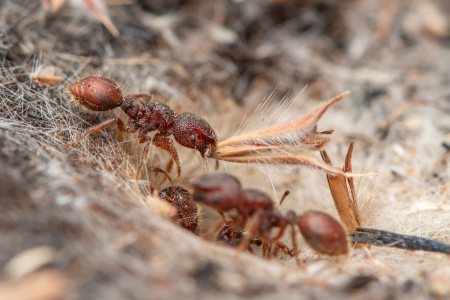News
Researchers discover hundreds of new ant species in Northern Australia’s tropics
Charles Darwin University (CDU) researchers have discovered thousands of new ant species in the monsoonal tropics, showing ant populations in Northern Australia are some of the world's most diverse.
CDU ecologist Professor Alan Andersen and his collaborators have assembled the world’s largest collection of Australian ants, containing more than 8,000 species.
“The extent of unrecognized diversity of species is incredible in our monsoonal tropics. We are not talking about three or four new species, but thousands of them; we have recently shown that something that has been considered to be a single variable species is in fact hundreds of actual species,” Professor Andersen said.
“This is just scratching the surface of ant diversity in Northern Australia. The diversity is totally unappreciated.”
Professor Andersen, from the Research Institute for the Environment and Livelihoods, said the ants were collected during hundreds of field trips over the past 40 years and it is the world’s largest ant collection outside one or two major museums.
Professor Andersen and his team use a combination of morphology, genetics, and geographic distribution to separate different species.
“In one trap during a collecting trip, we recorded 27 different species of ants,” he said.
“An area the size of an average suburban house block is often home to more than 100 different species of ants.”
Professor Andersen said in all there could be 5,000 species of ants in the monsoonal tropics. This would make monsoonal Australia the world’s richest region for ants.
“That 5,000 may in fact be a very conservative number,” he said.
“As new research is coming out, that number is only increasing.”
Professor Andersen said the results has dispelled some assumptions about global patterns of biodiversity.
“Peak ant diversity is generally considered to occur in tropical rainforests, particularly in the Amazon Basin and in South-East Asia. Our research has totally flipped that idea on its head,” he said.
“It is not just the monsoonal region but arid Australia more generally that has extraordinary ant diversity.”
Read about the new research here.
Related Articles

Is this AI or a journalist? Research reveals stylistic differences in news articles
News articles produced by Artificial Intelligence (AI) do not have the same creative flair as stories written by human journalists, according to research into the stylistic differences between the storytellers.
Read more about Is this AI or a journalist? Research reveals stylistic differences in news articles
Inspired NT just got Radicle
From Inspired NT to CDU Radicle Centre the Charles Darwin University (CDU) Faculty of Science and Technology Team is working on more ways to engage with young Territorians.
Read more about Inspired NT just got Radicle
NT to become Australia’s brightest spark with CDU’s new Energy and Resources appointment
After a career crossing continents and fields, Professor Maurizio Cirrincione has landed in the Top End of Australia to take the helm of Charles Darwin University’s (CDU) Energy and Resources Institute (ERI).
Read more about NT to become Australia’s brightest spark with CDU’s new Energy and Resources appointment
